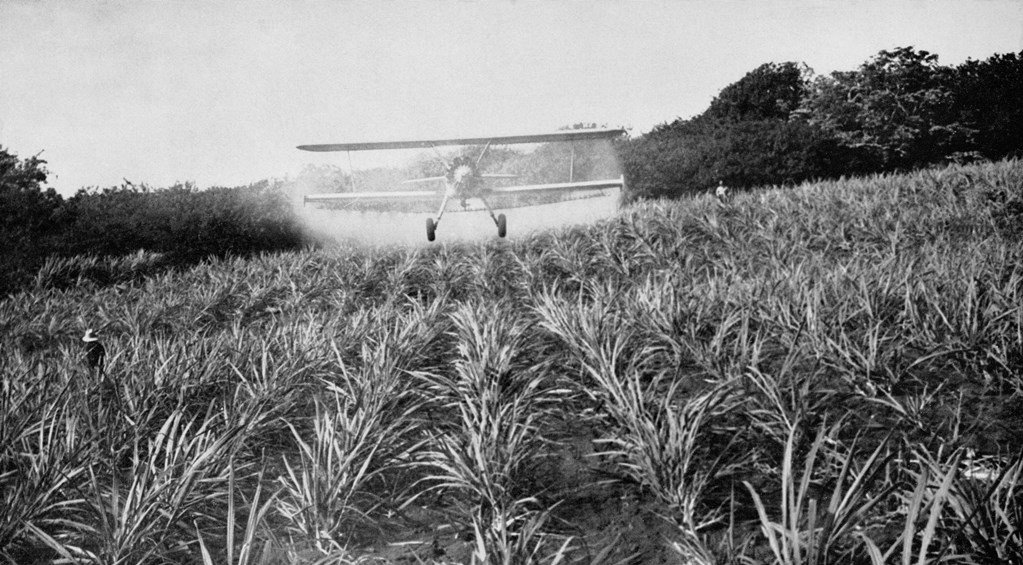Of Airstrips, Crop Dusters, and Pilots July 2013
In growing a crop of Sugarcane one needed to use herbicides, fertilizer and ripeners to produce a good profitable yield of sugar. Fertilizer was applied to the fields at about six week intervals from planting to about 12 months of age. This was done by machines travelling the rows of the field until the cane was about five months old. At that point the cane became tall and thick enough to “Close In” the lines.
Once the field became closed- in machines could not enter. The cane still needed fertilizer to grow and that was now applied by aircraft. Crop Dusting airplanes did not start on the plantations until after World War II. After the war was a period of massive changes in how sugarcane was grown, harvested and milled. Chemical herbicides were formulated replacing the toxic arsenic compounds of the past. Granular commercial fertilizers were developed replacing the bird guano harvested from the Northwest Hawaiian Islands. These chemicals were mixed at small airstrips across the plantations and applied with bi-wing crop dusters. At Mauna Kea Sugar we had three airstrips, Honolii, Hakalau and Pepeekeo. In fact today if you go up Kaupakuea Homestead Road in Pepeekeo you will see a subdivision road sign “Airstrip Road” and the water tank that we used to fill the mixing tank is still there too. No planes will ever land on this road again however, the subdivision developers put utility lines right down one side of the airstrip.
Working with the crop dusters and pilots was a very exciting job. These planes would come in slow and land to a complete stop within a couple hundred feet of pavement. They would then taxi up to the loading dock where the ground crewman would fill the hopper. It was quick and deliberate, no time to stop and chat, you got loaded up and then full throttle back down the airstrip with up to 3000 lbs of material in the hopper. The huge radial engines were deafening as the pilot would adjust the pitch of the blades and accelerate to maximum RPM.
The planes and pilots were not employees of the plantation, but contractors from the firm MURRAYAIR LTD. These pilots were a very unique bunch and it was most entertaining to observe their flying patterns and techniques. Having come out of the air force these pilots flew their crop dusters much like they flew their fighting warplanes…how’s that you ask…Well Don LaValley was a B-29 bomber pilot, when he made his turns at the end of the dusting run his turns were wide and slow. Bob Crowell was a P-38 pilot, (that strange looking fighter with two fuselages and the pilot sitting in the middle ‘bathtub’); his turns were more sharp and quick. Then there was Al Carter who flew a P-51 mustang, his turns in the crop duster was to climb almost straight up vertical he would then flip the tail of the plane around and come straight back down leveling out just in time for the next run. If you would like to see Al Carter and the MurrayAir crew in actual video footage please go to YOUTUBE and enter this search address: youtube.com/watch?v=TRIoKwJdhWw,
Now every now and then there was an “incident”. I do not like calling them crashes. In one these incidents the plane went down in field V10A just off Indian Tree Road in Onomea. We trudged through the tall cane trying to find the downed aircraft and pilot; we came upon the plane upright sitting nicely in the cane and the pilot sitting on the wing. I asked “What happened?” and the pilot (who I will no name), Said “Oh, nothing much, I just ran out of Air!”


